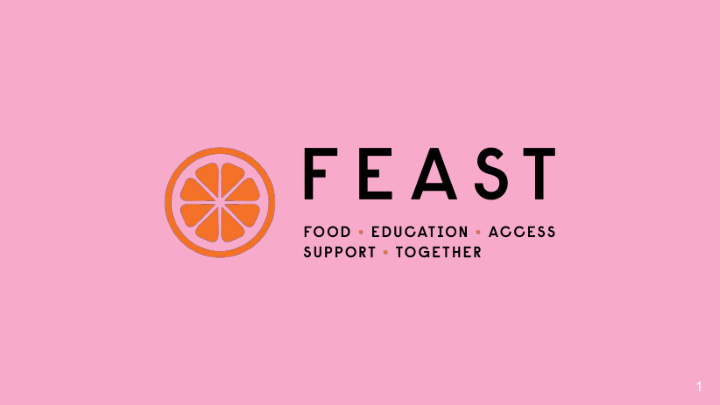



1
GROCERY SHOPPING TOUR 2
OBJECTIVES ● How to shop in a time effective manner ● How to read nutrition labels ● How to select whole foods and ingredients ● How to shop for nutritious foods on a budget 3
INTRODUCTION ● Preparing meals at home is often more cost effective and healthier ● Looking at product labels, ingredient lists, and prices can help with buying affordable healthy food ● Pro Tip #1 Make a grocery list and stick to it! ● Pro Tip #2 Try not to shop while hungry to minimize purchasing items you don’t need 4
AT THE GROCERY STORE ENTRANCE ● Ask participants, “What type of foods do you typically see most in the front of the store”? ● Often times, processed junk food that are marked on sale is placed at the front of entrance because they help generate higher profits. ● While we can buy healthy products like fruits, vegetables, and whole grains at the grocery store, it is also easy to find many unhealthy products as well. ● While we are walking around, we will pay attention to the placement of food products at eye level, items around the perimeter versus central aisles, and how they are marketed. 5
PRODUCE ● Organic vs. Non-Organic ● Aim for 5 servings a day (2 fruit and 3 vegetables) - refer to MyPlate ● Comparison between fresh, frozen, canned o Bring example of canned vegetable and look at ingredients Eat the rainbow! Have a ● Cooking methods to optimize nutritional variety of fruits and value vegetables to fill your ● plate - at least 3 different Seasonal produce is less expensive colors in shopping cart 6
MEATS / PRODUCE ● Animal vs. Plant based protein ● Discuss how much protein we need per day (approx.. 0.8 kg/g) ● Beans/legumes are protein source ● Health benefits of fish and how to choose low mercury options ● Review different meat labels and discuss pricing ● Eggs 7
DAIRY ● Recommended 2-3 servings/day ● Non-dairy milk alternatives ● Dairy and leafy greens both provide good sources of calcium ● Check the ingredient list to avoid hidden sugars in flavored milk and yogurts ● Choose lower fat option 8
GRAINS ● Emphasize whole grains ● Aim for at least 3-6 grams of fiber per serving ● Read labels to look for calories, fiber, sugar ● Activity: Choose a few cereals and try to find a type with less than 10g of sugar o Point out a few items that say “whole grains” on the front but actually contain more than 10g of added sugar 9
FROZEN FOODS ● Point out healthy frozen food options such as fruits and vegetables ● Most frozen food meals sold in boxes can be made at home for cheaper ● Look for lower fat and lower sodium items ● Activity: Read nutrition labels of specific prepared meal brands like Lean Cuisine 10
BEVERAGES & SNACKS ● Enhance water using fresh fruit, lemon, mint, and other herbs ● Avoid packaged items that you can make at home ● Always read nutrition label (choose items low in sugar, salt, calories and high in fiber) ● Carbonated water options (La croix) 11
CHECKING OUT ● Avoid the temptation to grab candy and soda and at the check-out aisle ● Encourage group to use coupons and ask about store loyalty program points ● BYOB (Bring Your Own Bag) to save a few cents ● Questions? 12
This presentation was created by Sara Alamdari and Jordan Anthony, Dietetic Interns at USC School of Gerontology. Special thanks to USC Good Neighbors Campaign and Ralphs for their support. 13
Recommend
More recommend